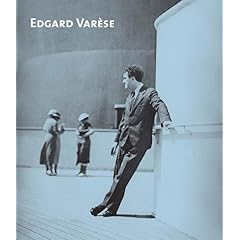 Keys to the Future is a festival of contemporary music for solo piano that began here in New York in 2005. Season 2 takes place November 7-9 (Tues., Wed. and Thurs.) at Greenwich House’s Renee Weiler Concert Hall. (If you haven’t been there, this intimate hall is ideal for listening to piano music.) If you’re interested in checking out pertinent information, the website is http://www.keystothefuture.org/, or you can contact me directly at joe@keystothefuture.org. The six pianists involved are: Lisa Moore, Blair McMillen, Tatjana Rankovich, Lora Tchekoratova, Polly Ferman, and myself. I thought I’d talk briefly here about the Festival and then focus on one piece from each of the three programs.
Keys to the Future is a festival of contemporary music for solo piano that began here in New York in 2005. Season 2 takes place November 7-9 (Tues., Wed. and Thurs.) at Greenwich House’s Renee Weiler Concert Hall. (If you haven’t been there, this intimate hall is ideal for listening to piano music.) If you’re interested in checking out pertinent information, the website is http://www.keystothefuture.org/, or you can contact me directly at joe@keystothefuture.org. The six pianists involved are: Lisa Moore, Blair McMillen, Tatjana Rankovich, Lora Tchekoratova, Polly Ferman, and myself. I thought I’d talk briefly here about the Festival and then focus on one piece from each of the three programs.
My goal as Artistic Director of Keys is to get listeners up to speed on what’s been happening in recent years with solo piano music. In 2005, we were fairly rigid about the pieces on the programs being very recent, but this season, the Festival has opened up a bit to include a handful of pieces from the 1970s and 80s. My rationale was that pieces by a great but little-known British composer like Howard Skempton are so rarely performed that, despite the fact that some were composed 25 years ago, they will be as new to most listeners. The Festival has embraced the stylistic diversity of the contemporary scene, and you will hear pieces on the same evening of a type that are rarely if ever performed on the same program (for example, a short work by Berio followed by an arrangement of a Radiohead tune on 11/8).
Now to 3 of the pieces:
On the first night (Tuesday, 11/7), I will play 8 short works by the aforementioned Howard Skempton. These pieces combine minimalism and the English folk tradition, expressed in the form of extremely condensed miniatures, some of which last for less than a minute. Three of the pieces were composed in memoriam: for Cornelius Cardew (“Well well Cornelius”), John Cage (“Of Late”) and Morton Feldman (“Toccata”). I thought rather than start the Festival with a dazzling virtuosic showpiece, I’d begin the Festival with some peaceful, meditative sounds.
On the 2nd evening (Wednesday, 11/8), brilliant pianist Tatjana Rankovich will open the program with Franghiz Ali-Zadeh’s “Music for Piano” (1997). Ali-Zadeh is a native of the former Soviet republic of Azerbaijan whose eloquent music is poised between the Middle East and the modernist West. “Music for Piano” is notable for turning the middle register of the instrument into a stand-in for the “tar,” a long-necked lute played across the Middle East and Central Asia. To accomplish this, Tatjana will prepare the instrument with a beaded necklace over the central portion of the strings inside, as instructed in the score.
On the third evening (Thursday, 11/9), Polly Ferman, the world’s foremost specialist in the piano music of Latin America, will close the program with Osvaldo Golijov’s “Levante: Fantasy on a Chorus from the ‘St. Mark Passion’” (2004). This is Golijov’s first piano work. Based on the eleventh section of his 2001 Passion–a setting of the story of Judas offering to betray Jesus for silver coins–the piece is fired by Latin American dance rhythms. The composer has compared the section to a raucous Cuban meal in which a drunken priest relates the biblical narrative. Interestingly, in the process of transcription to piano, the music morphed from Cuban rhythms to tango.
I hope you come to one or more of the evenings. It should be fun. Please take a look on Sequenza21.com next Friday for my second post.
Joe
Joseph Rubenstein
Artistic Director, Keys to the Future





